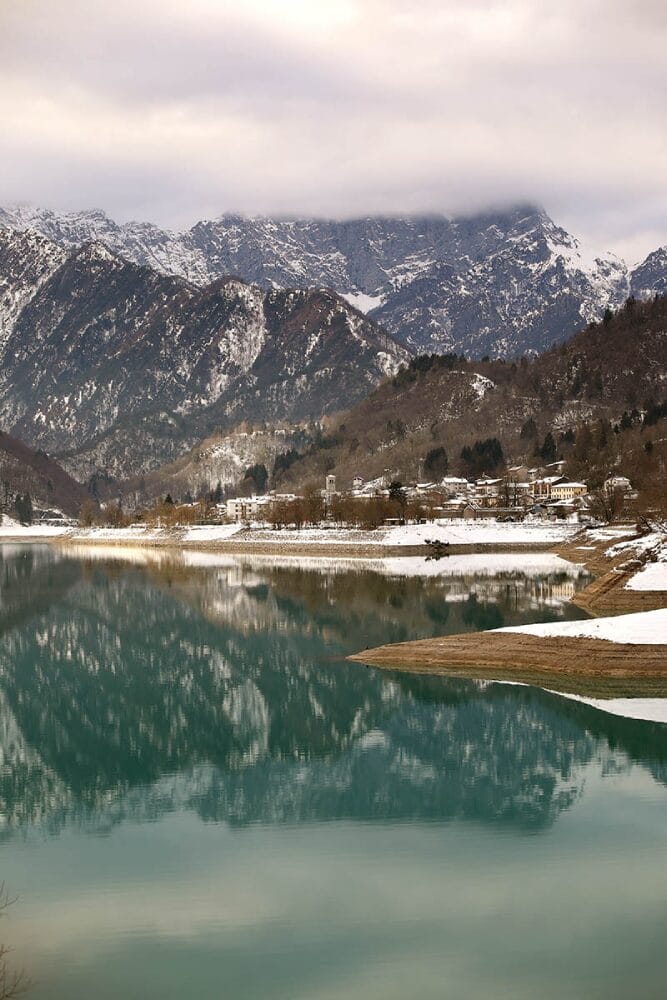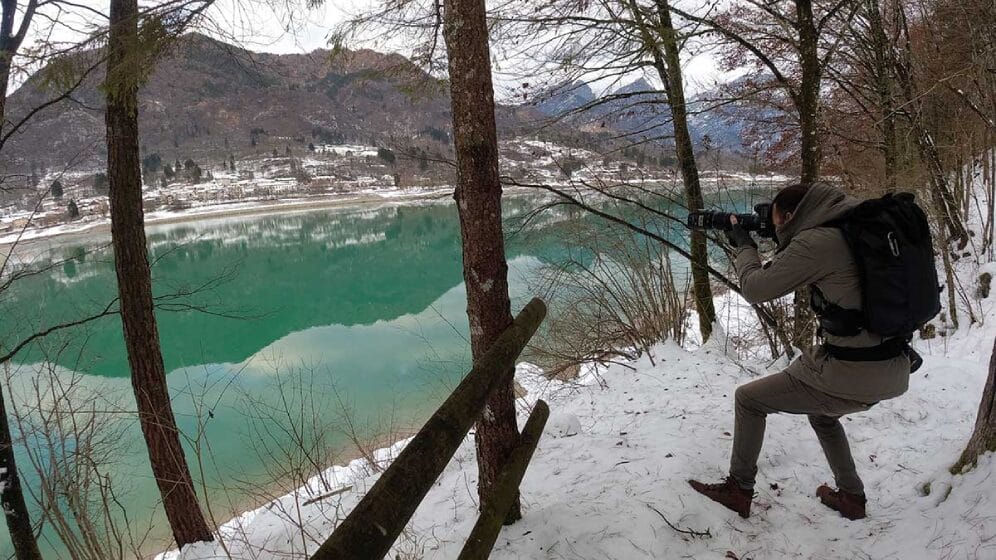Of Lens & Mind, Travel Photography Tips & Insights
Lessons from Ansel Adams: The Ever-Changing Sky
Ansel Adams is one of those artists, at least for me, that you need to be a little older to truly appreciate. When I was a kid, my family and I used to go camping every year in Yosemite. I remember seeing photos he had taken when I was really young, and I thought they were really cool. I wanted to see those mountains too! As I got a little bit older, though, and started getting into photography myself, I’ll admit I started feeling less inspired by his work. When I was in high school, I had taken multiple film photography classes.
We went through the entire process and had our own dark room, etc., and I remember studying his work and just feeling a bit bored by it at that point. Been there, done that. Another mountain with trees. ‘I can do that,’ I thought.
Around 10 years later, I moved to Italy and started working as a travel photographer, but I still maintained these sentiments. When I think about photographers that inspired me at that time, I honestly couldn’t name one, and it certainly wasn’t Ansel Adams. It wasn’t until several years later, when I started traveling more and started maturing both as an artist and as a person, that I started reflecting more on Ansel Adams and his work, and I started to really have an increased respect for him.
Ansel Adams was more than a photographer—he was an observer, a thinker, and a patient craftsman. His masterpieces emerged not simply because he clicked the shutter at the right time, but because he waited, anticipated, and respected the delicate dance between light, shadow, and the weather. Adams didn’t only photograph landscapes; he predicted them, capturing the fleeting yet perfect balance of conditions he envisioned in his mind.
This concept stayed with me throughout my growth as a photographer: photography isn’t merely pointing a camera at something beautiful. It’s a quiet, patient exploration of something deeper—discovering magic in moments that others might overlook.
What really sealed the deal for me was the first time that I visited the Dolomites in Northern Italy – where everything sort of became more clear to me. That Ansel Adams’s work is less about the final outcome than it is about the journey- the time, and the dedication to produce it. Work like this takes patience; it requires you to slow down. It requires planning.
Ansel Adams was a talented photographer, but he was truly a master of the darkroom (which, to think about it, is kind of how I started my journey as well). I started as an ‘okay’ photographer, but an expert is post-production – but I digress. He spent an enormous amount of time planning shoots to try to find the perfect moment to capture his subjects, and then he got to work in the darkroom to really make them shine.
The whole process is honestly so inspiring to me now, and the more I think about it, the more I realize how much he may have been an influence to me all along.
Chasing the clouds
His philosophy applies to one of my favorite photographic subjects: clouds. Just as Adams waited for nature’s cooperation, photographing clouds demands endless patience and awareness. Clouds are perpetually shifting, changing their shapes and textures every passing second. They’re also not always around, so finding the perfect balance of light, and clouds are increasingly precious to me when I’m out travelling – or even at home simply looking out from my window.

Many of my favorite cloud images were taken during a mesmerizing sunset in Barga, Italy. The sky seemed to reinvent itself every few seconds, morphing from soft pinks and golds into deep, dramatic storm clouds. Capturing something so beautifully fleeting was both exhilarating and humbling. Every second mattered, reinforcing the crucial lesson: patience. I wasn’t there for the famous ‘double sunset’, but after seeing this sunset there – I was absolutely inspired to want to go back there if nothing else but to watch a sunset from that hilltop again.


The Intersection of Intention and Spontaneity
Adams taught us that photography is not only reactionary—it’s a thoughtful, intentional act. He would meticulously pre-visualize his photographs, carefully considering his compositions long before he pressed the shutter button. Yet, within this careful preparation, he always embraced spontaneity. A slight shift in cloud formation, a subtle change in lighting—these moments of unpredictability weren’t hindrances but opportunities for Adams to enhance his art.
In my photography practice, I lean more towards the realm of unpredictability, mixed with some planning in between. I like to be surprised, I love to embrace the unknown . Sure, to some extent I’ll choose locations or the time of day based on kind of shots that I might want to take – but I love the feeling of exploring something that I never knew existed before. To give you an example, my intent when taking these photos was to visit the Dolomites The whole trip was focused on the Dolomites, and with a trip like that I certainly did my research since I had some key locations I wanted to capture. I had to sort out logistics and travel times in between locations, etc.. I had an extra day to explore, so I asked a local if there was anything interesting to see around where I was staying and they recommended this lake called Lago di Barcis. No other details, they just said it would be beautiful to see. As you can see ‘beautiful’ is quite the understatement here. This lake surrounded by snow-covered mountains was nothing short of amazing, and for me – what made it even more so was that I had no idea what to expect. I had no clear vision of the photos I would take, I was just passionately embarking on another adventure.


Seeing Through the Lens of Time
Photography holds profound power because it not only freezes moments—it reminds us of their ephemeral nature. Nothing captured through a lens ever truly remains static. Instead, every photograph represents a specific moment, an instant in time that will never occur again exactly as it was.
This understanding deeply informed Adams’ photography. He didn’t just document beautiful landscapes—he documented time itself. When I look at the stormy skies above Barga, alive with fiery reds and subtle pink hues, I’m reminded of this impermanence. Photographing clouds is not simply about mastering technical skills—it’s a meditation on embracing impermanence, understanding the delicate balance between control and surrender.
A Lasting Influence
The legacy of Ansel Adams remains an ongoing inspiration in my life—not just in photographic technique, but as an approach to living. His work reminds me that photography, at its core, is about slowing down, seeing clearly, and accepting life’s ever-changing beauty with intention and gratitude.
Whether you are a photographer, an artist, or simply someone looking to navigate life with more awareness, there’s much we can learn from Adams and the ever-changing skies above. Take a moment. Slow down. Let patience guide you. Celebrate the spontaneous beauty around you. And when the perfect moment appears—when the clouds align and the light dances before you—be ready to capture it, knowing it’s a precious instant that won’t come again.






